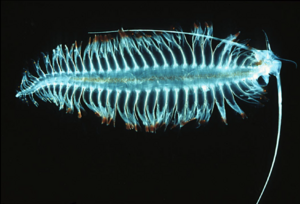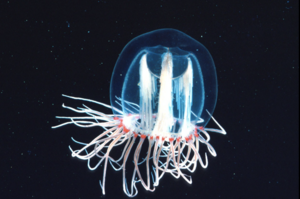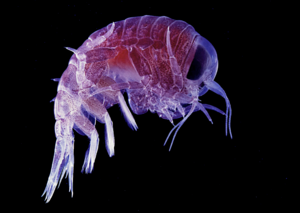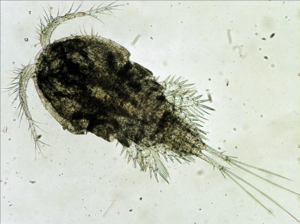Plankton
Plankton they form microscopic and macroscopic organisms whose movement in the water column is passive (ie, for example, it is not able to move actively upstream). Plankton can be divided in two different ways.
According to the type of organisms:
- bacterioplankton, phytoplankton (predominantly autotrophic organisms) and zooplankton (predominantly heterotrophic organisms).
By size:
- femtoplankton (0.02–0.2 μm), picoplankton (0.2–2.0 μm), nanoplankton (2.0–20 μm), microplankton (20–200 μm), mesoplankton (0.2–20 mm), macroplankton (2–20 cm) and megaplankton (20–200 cm).
Planktonic organisms are found in all types of waters in which they have suitable conditions for survival and food source (eg on glaciers, puddles, rivers, in the ocean). Because plankton are unable to move actively, they have had to develop enough adaptations to allow them to survive conditions such as dehydration, chemical change, frost, or the absence of sexual partners. Such adaptations include, for example, the formation of dormant stages or eggs, the formation of cuticles or parthenogenesis (a type of reproduction in which individuals hatch from unfertilized eggs). Adaptations for protection against UV radiation (pigmentation) are also common, which is able to penetrate to depths of several meters below the surface and has a negative effect on the physiology of organisms.
Due to the fact that plankton are formed by both autotrophic organisms (producers) and heterotrophs (consumers), they represent an essential functional component of all aquatic ecosystems.
An illustrative example of the activity of planktonic organisms can be observed, for example, on seasonal changes in the transparency of water in ponds. In the spring, the water is clean in them, because it contains a zooplankton, which consumes algae in the water column. In the summer, the water becomes cloudy, as plankton-eating fish grow, which consume large zooplankton, and small individuals do not have enough to filter the water so effectively.
Zooplankton, especially crustaceans of the order Cladocera (pearl mussels), are widely used in wastewater treatment plants, where they serve as very functional "final cleaners".
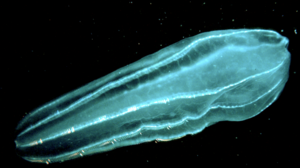
Links[edit | edit source]
Related Articles[edit | edit source]
Source[edit | edit source]
- LELLÁK, Jan et al. Biologie vodních živočichů. Státní pedagogické nakladatelství, Praha. 1972.
- CASTRO, Peter a HUBERT, E. Michael. Marine Biology (10. edice). McGraw-Hill Education, New York. 2016.

